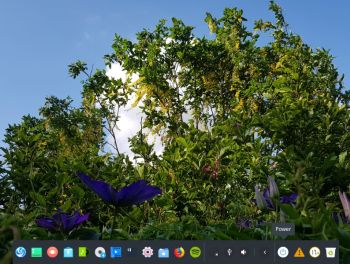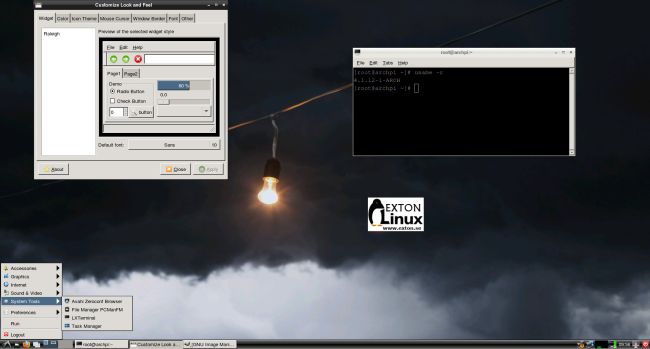 RaspArch Build 200304 especially for the new Raspberry Pi 4 released 190624
RaspArch Build 200304 especially for the new Raspberry Pi 4 released 190624
This version (200304) is especially made for the new Raspberry Pi 4, but it can of course also be used on a Raspberry Pi 3 Model B+, Raspberry Pi 3 Model B and Raspberry Pi 2 Model B.
RaspArch is a “remaster” of Arch Linux ARM. The original compressed system is of about 230 MB. After I have added the LXDE Desktop environment, PulseAudio, Samba, Firefox, Yaourt and NetworkManager the system has increased a lot. RaspArch is a “ready-to-go” ARM system. It must be installed on a Raspberry Pi 4, Raspberry Pi 3 Model B+, Raspberry Pi 3 Model B or Raspberry Pi 2 Model B computer.
NEWS in RaspArch Build 200304
A new kernel – 4.19.106-1-ARCH. All included packages have been updated to the latest version as of 200304. I have added support for Yaourt – a Pacman Fronted. I have also installed PulseAudio. Finally the sound works very well in RaspArch. Nice if you like YouTube. I’ve also replaced Wicd with NetworkManager. It works better. Note1: To be able to install Yaourt I had to install a lot of development tools. Note2: Some people say that Yaourt is outdated. It should be replaced by Yay – yet another Yaourt.
Compatibility :: March 2020
Unfortunately not all systems made for Raspberry Pi 3 and 2 will run on the new Raspberry Pi 4 computer. They need to be upgraded with a new kernel. I therefore have to upgrade the systems I distribute. I.e. RaspEX, RaspEX with OpenCPN, RaspEX BunsenLabs, RaspEX Kodi, RaspAnd Marshmallow, RaspAnd Nougat 7.1.2, RaspAnd Oreo 8.1, RaspAnd Pie, EXTON OpSuS Rpi, FedEX Rpi3 and RaspArch. I have until now (200304) only upgraded RaspEX, RaspEX Kodi, RaspArch and RaspEX with OpenCPN. Read about the new Raspberry Pi 4.
WHO should run Arch Linux/RaspArch?
My answer: The system fits the “advanced” Linux user/enthusiast, who would be willing to run an occasional command from time to time.
SCREENSHOTS
Screenshot 1 of RaspArch’s Desktop – logged in as archpi
Screenshot 2 of RaspArch’s Desktop – YouTube running
Screenshot 3 – Yaourt running (while installing Geany)
Screenshot 4 of RaspArch’s Desktop – logged in as root
Screenshot 5 – Samba connection to a Windows computer
Screenshot 6 – some system INFO when running RaspArch
Screenshot 7 – showing that you can watch 4K videos using Firefox
andex.exton.net – latest is AndEX 10 (with GAPPS) and AndEX Pie 9.0 (also with GAPPS)!
and
about my Pie, Oreo, Nougat, Marshmallow and Lollipop versions for Raspberry Pi 3/2 at
raspex.exton.se – latest is RaspAnd Pie 9.0 (without GAPPS) and RaspAnd Oreo 8.1 (with GAPPS)!





